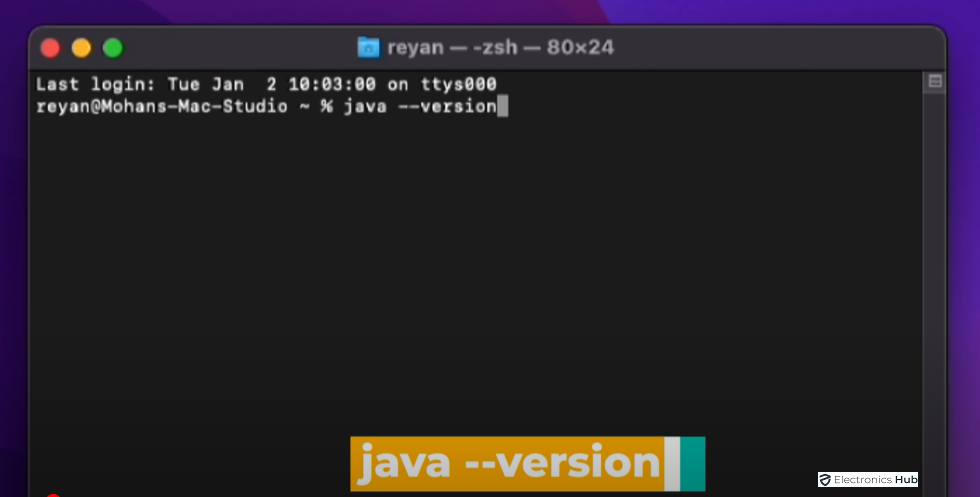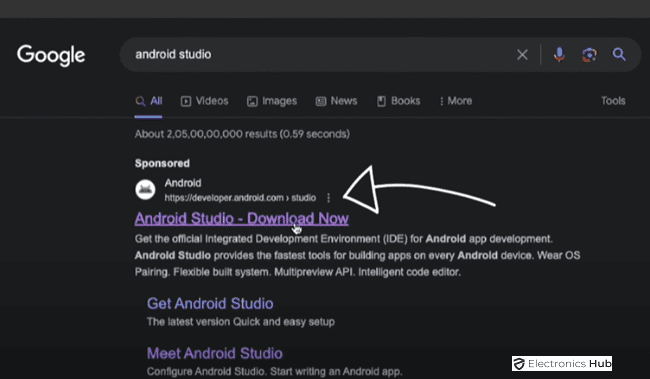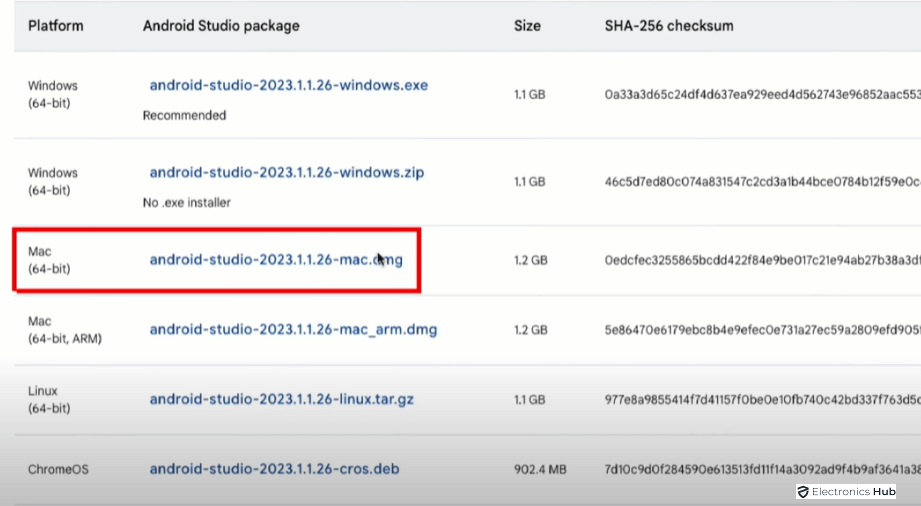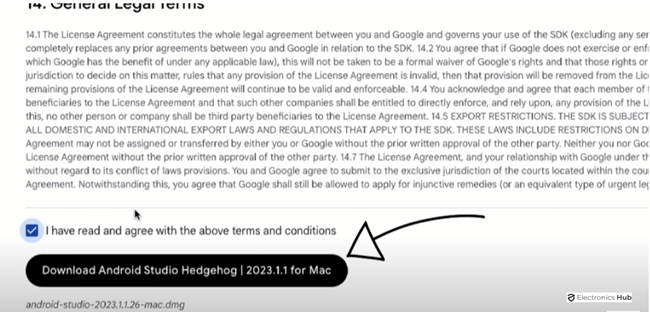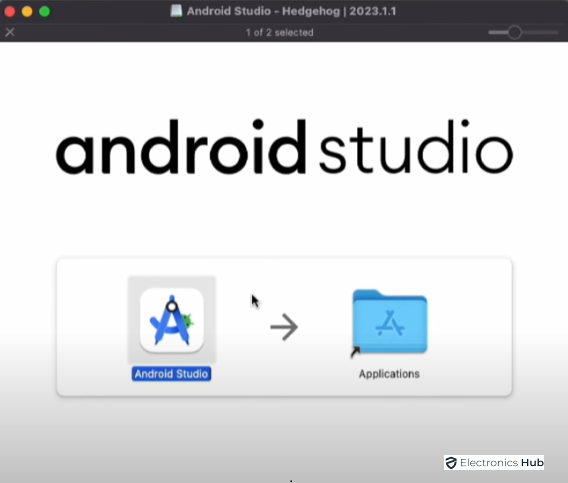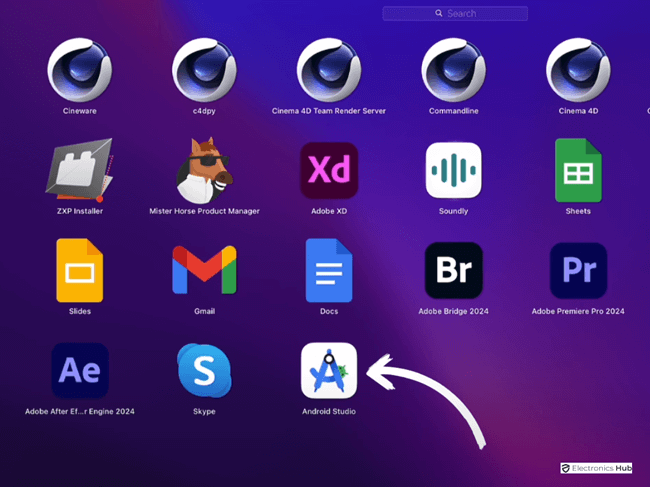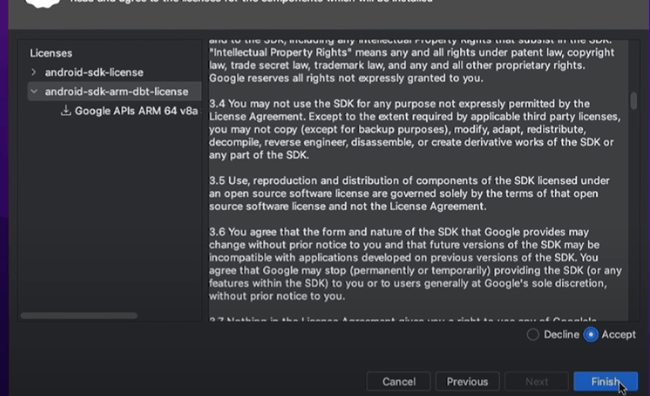Do you want to install Android Studio on Mac OS for your Android app development needs? If so, you’re in the right place. In this guide, we’ll walk you through the step-by-step process of downloading and installing Android Studio on your Mac. Whether you’re a beginner or an experienced developer, this tutorial will help you set up the official integrated development environment (IDE) efficiently and effectively.
Outline
ToggleChecking Mac Requirements for Android Studio Installation
Before diving into the installation process, it’s essential to ensure that your Mac meets the necessary requirements for running Android Studio smoothly. Here are the minimum and recommended system specifications:
Requirements:
* Minimum:
- OS: macOS 10.14 Mojave
- RAM: 8GB RAM
- CPU: Apple M1 chip, or 2nd generation Intel Core or newer with support for Hypervisor Framework
- Disk space: 8GB (IDE and Android SDK and Emulator)
- Screen resolution: 1280 x 800
* Recommended:
- OS: Latest version of macOS
- RAM: 16GB RAM or more
- CPU: Latest Apple Silicon chip
- Disk space: Solid-state drive with 16GB or more
- Screen resolution: 1920 x 1080
Ensure your Mac meets these requirements to guarantee a seamless experience with Android Studio.
Also Check:
Importance of Java Installation
Before proceeding with the Android Studio installation, it’s essential to have Java installed on your Mac device. Android Studio is built on Java, and having Java installed ensures smooth functioning of the IDE.
Checking Java Version
Open the terminal and type java -version to check the installed Java version. Ensure that the Java version meets the minimum requirements specified by Android Studio. If Java is not installed, you’ll need to download and install it. You can find the installation link here.
Can I Install Android Studio with 4GB of RAM?
While the minimum requirement for RAM is 8GB, it’s possible to install and operate Android Studio on a system with 4GB RAM. However, it’s not recommended due to potential performance issues. Android Studio and its accompanying tools demand significant memory resources for optimal functionality. Google recommends at least 8GB of RAM for the best performance. Systems with lesser memory may experience suboptimal performance, crashes, or other complications while using the IDE.
Android Studio Compatibility with M1, M2 and M3 Macs
Android Studio works seamlessly on Mac computers powered by the M1 chip. Its compatibility with Apple Silicon ensures smooth operation on M1 Macs through the Rosetta 2 translation layer. This assurance provides developers with uninterrupted access to the versatile IDE, facilitating an efficient app development process. Moreover, Android Studio will continue to deliver optimal performance on future Macs featuring the M2 chip, ensuring consistent support for upcoming hardware advancements.
Moving forward, as Apple introduces its latest innovation with the M3 chip, Android Studio is poised to maintain its stellar compatibility. With each iteration of Mac hardware, developers can expect Android Studio to adapt effortlessly, providing a reliable environment for creating and refining their applications. This commitment to compatibility underscores the dedication of both Google and Apple to empower developers with the tools they need to succeed in a dynamic technological landscape.
How to Download Android Studio on Mac OS
Now that you’ve verified your Mac’s compatibility and Java installation, let’s proceed with downloading Android Studio:
- Open your preferred web browser and go to the official Android Studio download page on the Android Developers website.
- Click on the “Download Android Studio” button to initiate the download process.
- Review and accept the terms and conditions, then select the appropriate download option for Mac.
- Once the download is complete, locate the downloaded file in your Downloads folder and open it.
- Drag the Android Studio icon into the Applications folder to complete the installation.
Installing and Setting Up Android Studio on Mac
Now that you’ve downloaded Android Studio, let’s proceed with the installation:
- Open the Launchpad and locate the Android Studio icon. Click on it to launch the setup process.
- Follow the on-screen instructions to customize your Android Studio settings and accept the terms and conditions.
- Once the installation is complete, launch Android Studio and configure any permissions required.
- Check the preview and click “Finish” to complete the installation process.
Accessing Previous Versions of Android Studio
For those who require access to previous versions of Android Studio, Google maintains an archive of past releases. Follow these steps to download an older version of the IDE:
- Head to the Android Studio download archive on the official Android Developers website.
- Review and accept the terms and conditions, then browse through the available versions to find the one you need.
- Download the desired version and follow the installation instructions provided.
Accessing Previous Versions of Android Studio
For those who require access to previous versions of Android Studio, Google maintains an archive of past releases. Follow these steps to download an older version of the IDE:
- Head to the Android Studio download archive on the official Android Developers website.
- Before accessing the archive, you may need to agree to the ‘Terms and Conditions’. Review and accept the terms to proceed.
- Once inside the archive, you’ll find a list of previous Android Studio releases. Browse through the available versions to find the one you need.
- Locate the specific version of Android Studio you wish to download. Click on the download link to initiate the process.
- After downloading the desired version, follow the installation instructions provided to install it on your Mac.
Differences Between Xcode and Android Studio
While Xcode and Android Studio are both integrated development environments (IDEs), they serve distinct purposes for different platforms. Here’s a breakdown of the key differences:
- Xcode: Developed by Apple, Xcode is primarily used for creating applications for iOS, macOS, watchOS, and tvOS. It offers a comprehensive set of tools and features tailored to Apple’s ecosystem.
- Android Studio: Developed by Google, Android Studio focuses on facilitating the development of Android applications. It provides developers with a wide range of tools and resources specifically designed for Android app development.
While both Xcode and Android Studio offer powerful features and seamless integration with their respective platforms, they are not interchangeable. Each IDE is optimized for its target platform, ensuring that developers can create high-quality applications efficiently.
Download Android Studio on Mac OS – FAQs
Ans: Yes. Google ensures that Android Studio receives updates to maintain compatibility with the latest versions of macOS. Developers can confidently use Android Studio on macOS Monterey for Android app development without encountering compatibility issues.
Ans: To uninstall Android Studio from my Mac:
* Locate the Android Studio application in the “Applications” folder on your Mac.
* Drag the Android Studio application from the “Applications” folder to the Trash.
* Navigate to the ~/Library/ directory and delete any remaining Android Studio files and folders.
* Go to the ~/.android/ directory and remove any Android Studio-related files.
* Empty the Trash to complete the uninstallation process.
Ans: Yes, you can install Android Studio alongside Xcode on your Mac. Both IDEs serve different purposes, with Xcode primarily used for iOS and macOS development, while Android Studio is for Android app development. Installing both IDEs allows developers to work on projects for multiple platforms without any conflicts. However, it’s essential to ensure that your Mac meets the system requirements for both IDEs and has sufficient resources to run them simultaneously.
Ans: Yes, Android Studio fully supports the Kotlin programming language for Android app development. Kotlin has been officially supported by Google since 2017 and is now the preferred language for Android development. Developers can use Kotlin alongside Java or as the primary language for writing Android apps. Android Studio provides seamless integration with Kotlin, including features like code completion, refactoring, and debugging support.
Ans: No, Android Studio is specifically designed for Android app development and does not support iOS app development. For iOS app development, you’ll need to use Xcode, Apple’s official IDE for macOS, which provides the necessary tools and resources for building applications for iOS, macOS, watchOS, and tvOS platforms. While Android Studio and Xcode are both powerful IDEs, they cater to different ecosystems and cannot be used interchangeably for app development.
Conclusion
Installing Android Studio on your Mac is essential for efficient Android app development. By ensuring your system meets the necessary requirements, verifying Java installation, and following our guide provided, you can seamlessly set up Android Studio. Remember, Android Studio offers a robust environment tailored for Android app development, complementing Apple’s XCode for iOS and macOS development. With these tools at your disposal, you’re well-equipped to embark on your app development journey with confidence.

